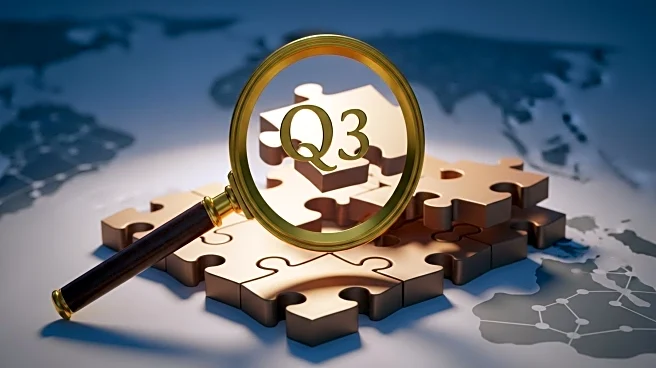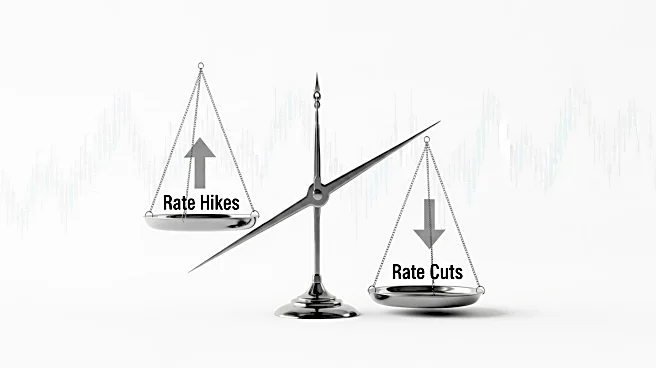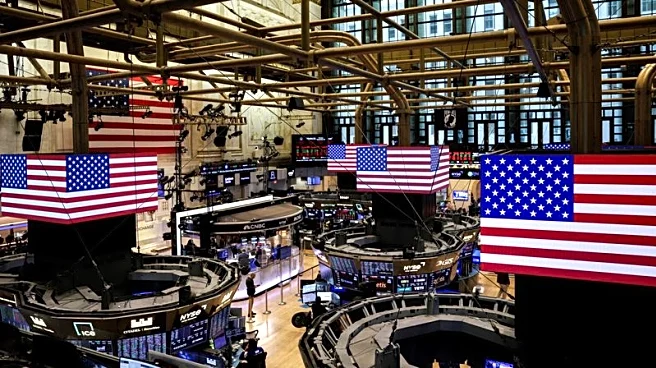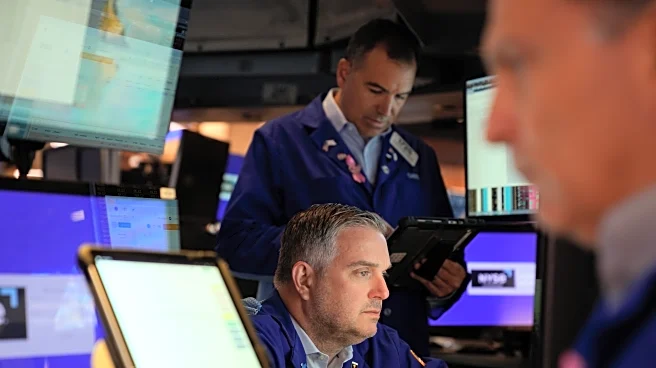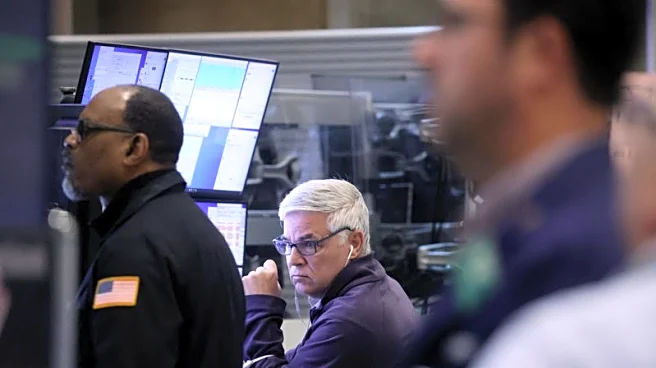What's Happening?
The global mergers and acquisitions (M&A) landscape is experiencing a significant surge, particularly in the third quarter of 2025, driven by megadeals and expectations of rate cuts. According to data from Dealogic, the collective deal value reached $1.29 trillion in the third quarter, marking an increase from $1.06 trillion in the second quarter and $1.1 trillion in the first quarter. This resurgence follows a period of caution due to recession fears and geopolitical tensions. Notable transactions include Union Pacific's $85 billion acquisition of Norfolk Southern and Electronic Arts' $55 billion leveraged buyout by the Public Investment Fund of Saudi Arabia, Silver Lake, and Affinity Partners. The M&A activity is buoyed by elevated levels of private-equity capital, often referred to as 'dry powder,' and a shift in corporate strategies towards growth despite ongoing geopolitical uncertainties.
Why It's Important?
The surge in M&A activity has significant implications for various sectors in the U.S. economy. It signals a renewed confidence among corporations to pursue strategic growth through acquisitions, despite geopolitical and trade uncertainties. The involvement of private equity firms, with substantial uninvested capital, indicates a robust investment environment that could lead to increased consolidation across industries. This trend may benefit sectors like technology and industrials, which are seeing a rise in initial public offerings. However, smaller and mid-cap companies may face challenges due to valuation gaps and tougher exit environments. The broader economic impact includes potential job creation, increased market competition, and shifts in industry dynamics as companies reposition themselves for future growth.
What's Next?
Looking ahead, the M&A landscape is expected to continue evolving as companies adapt to the new normal of geopolitical and trade uncertainties. The U.S. Federal Reserve's anticipated rate cuts could further lower financing costs, making acquisitions more attractive. Companies may increasingly employ creative deal structures, such as joint ventures and continuation vehicles, to navigate current headwinds. Additionally, there is a growing interest in AI-linked assets, which could drive further acquisitions in technology sectors. Stakeholder pressure on public companies to grow may lead to more divestitures, reshaping industry landscapes. The ongoing activity suggests a strong finish to 2025, with potential for continued growth in strategic acquisitions.
Beyond the Headlines
The current M&A boom reflects deeper structural changes in the global economy, including lighter-touch regulations and a backlog of exits. Private equity firms are leveraging their substantial 'dry powder' to capitalize on opportunities in AI and other emerging sectors. This trend highlights a shift towards innovation-driven growth, as traditional industries divest non-core assets to adapt to new technological environments. The focus on AI-linked assets underscores the increasing importance of data, infrastructure, and talent in shaping future business strategies. As companies navigate these changes, ethical considerations around data privacy and technological impacts may become more prominent.

